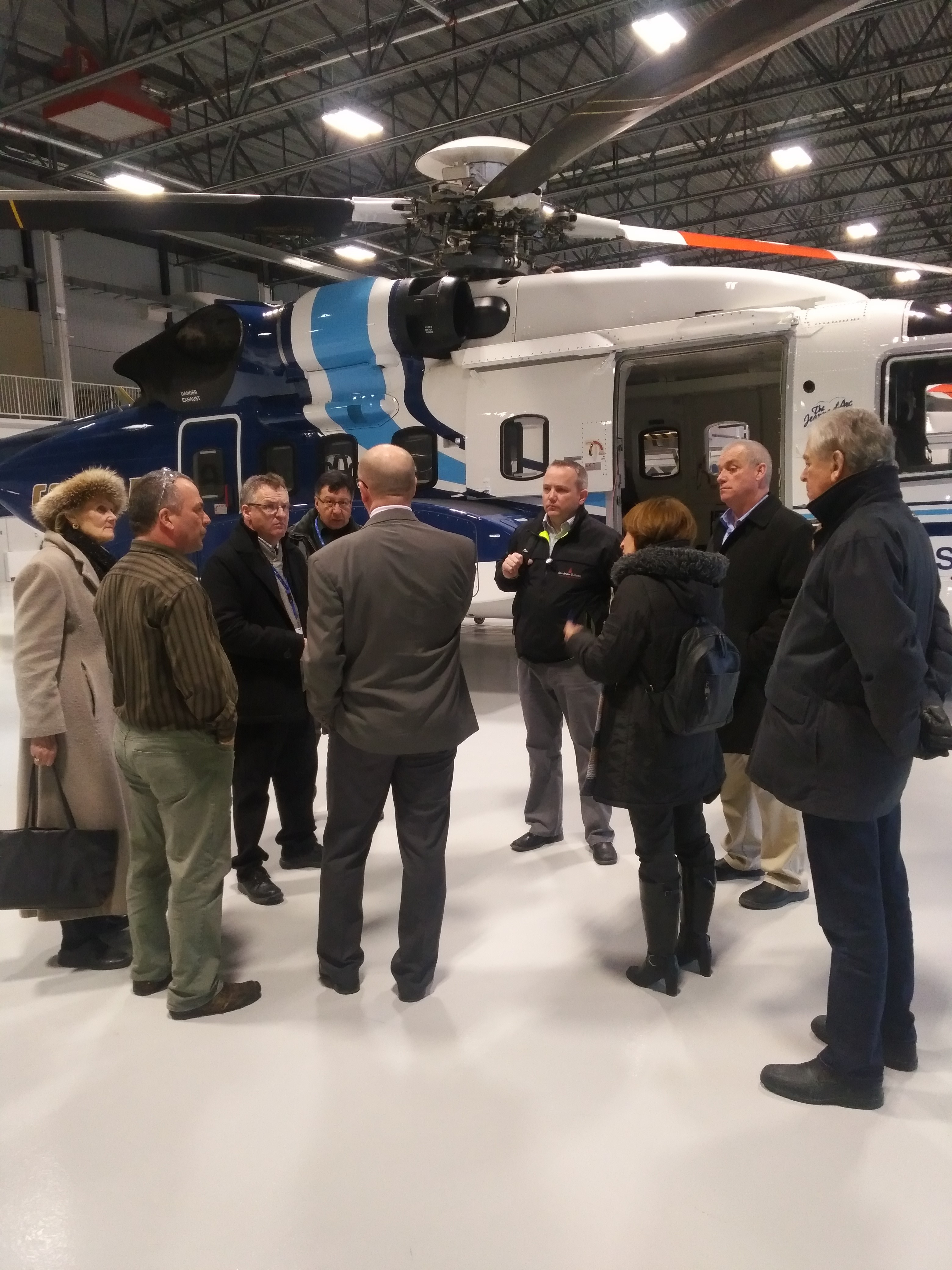Senators study maritime search and rescue efforts in Newfoundland and Labrador

Canada's coastlines offer some of the world's most challenging environmental conditions for maritime search and rescue activities. On the East Coast a beautiful day at sea can suddenly become a dangerous nightmare of gale force winds, freezing spray, ice cover and fog.
As part of its study on search and rescue activities, the Senate Committee on Fisheries and Oceans is exploring the challenges rescuers face while trying to ensure the safety of those at risk on Canada's waterways.
For three days in early March, senators put themselves in the shoes of maritime search and rescue (SAR) providers along the coast of Newfoundland and Labrador.

The Senate Committee on Fisheries and Oceans continued its study on Canada’s maritime search and rescue operations with a fact-finding mission and public hearings. In St. John’s on Monday, March 6, committee chair Senator Fabian Manning, himself from Newfoundland, outlined the committee’s objectives.
“Our role here is to look at search and rescue across the country, look at ways of improving that, learn from the mistakes of the past and hopefully put forward some recommendations to make them better in the future,” said Senator Manning.
Committee deputy chair Senator Elizabeth Hubley, as well as Senators Daniel Christmas and Thomas McInnis, also joined him. Together they toured the Canadian Coast Guard (CCG) regional headquarters for Newfoundland and Labrador in St. John’s. There, senators learned about maritime search and rescue, fleet operations and ice management through the use of live on-screen feeds.
They also had the opportunity to view the facilities at Cougar Helicopters, a private-sector provider of transportation and SAR services for the oil and gas industry.
Following their mission in St. John’s, senators made their way to Goose Bay in Labrador on Tuesday, March 7. This led committee members to Canadian Forces Base (CFB) Goose Bay, where they viewed the 5 Wing 444 Squadron, whose primary mission is to provide rapid response to local emergencies during flight operations and military exercises.
A short flight later, senators landed at CFB Gander, where 9 Wing 103 Squadron commanding officer Major Jim Pinhorn and Master Warrant Officer Mike Hurtubise briefed them on Cormorant SAR helicopters. Crews of 103 Search and Rescue Squadron, an operational unit of the Royal Canadian Air Force, answer the call in one of the busiest search and rescue regions in Canada.
Back in St. John’s on Wednesday, March 8, senators also hosted public hearings, joined by Senator Norman Doyle.
“These public hearings allow us to get a regional perspective on the country’s search and rescue program. We get to hear first-hand what works and what doesn’t, from the people who are directly concerned,” said Senator Hubley.
In November 2016, senators spent four days navigating the roads, waters and airspace of Nova Scotia as part of this study.
The committee plans to investigate search and rescue operations in other provinces later this year, before releasing a final report in November 2017.


Related articles
Tags
Committee news
Senators study maritime search and rescue efforts in Newfoundland and Labrador

Canada's coastlines offer some of the world's most challenging environmental conditions for maritime search and rescue activities. On the East Coast a beautiful day at sea can suddenly become a dangerous nightmare of gale force winds, freezing spray, ice cover and fog.
As part of its study on search and rescue activities, the Senate Committee on Fisheries and Oceans is exploring the challenges rescuers face while trying to ensure the safety of those at risk on Canada's waterways.
For three days in early March, senators put themselves in the shoes of maritime search and rescue (SAR) providers along the coast of Newfoundland and Labrador.

The Senate Committee on Fisheries and Oceans continued its study on Canada’s maritime search and rescue operations with a fact-finding mission and public hearings. In St. John’s on Monday, March 6, committee chair Senator Fabian Manning, himself from Newfoundland, outlined the committee’s objectives.
“Our role here is to look at search and rescue across the country, look at ways of improving that, learn from the mistakes of the past and hopefully put forward some recommendations to make them better in the future,” said Senator Manning.
Committee deputy chair Senator Elizabeth Hubley, as well as Senators Daniel Christmas and Thomas McInnis, also joined him. Together they toured the Canadian Coast Guard (CCG) regional headquarters for Newfoundland and Labrador in St. John’s. There, senators learned about maritime search and rescue, fleet operations and ice management through the use of live on-screen feeds.
They also had the opportunity to view the facilities at Cougar Helicopters, a private-sector provider of transportation and SAR services for the oil and gas industry.
Following their mission in St. John’s, senators made their way to Goose Bay in Labrador on Tuesday, March 7. This led committee members to Canadian Forces Base (CFB) Goose Bay, where they viewed the 5 Wing 444 Squadron, whose primary mission is to provide rapid response to local emergencies during flight operations and military exercises.
A short flight later, senators landed at CFB Gander, where 9 Wing 103 Squadron commanding officer Major Jim Pinhorn and Master Warrant Officer Mike Hurtubise briefed them on Cormorant SAR helicopters. Crews of 103 Search and Rescue Squadron, an operational unit of the Royal Canadian Air Force, answer the call in one of the busiest search and rescue regions in Canada.
Back in St. John’s on Wednesday, March 8, senators also hosted public hearings, joined by Senator Norman Doyle.
“These public hearings allow us to get a regional perspective on the country’s search and rescue program. We get to hear first-hand what works and what doesn’t, from the people who are directly concerned,” said Senator Hubley.
In November 2016, senators spent four days navigating the roads, waters and airspace of Nova Scotia as part of this study.
The committee plans to investigate search and rescue operations in other provinces later this year, before releasing a final report in November 2017.




